Your Car Deserves a Top-Rated Auto Technician
These AAA Approved Auto Repair shops and AAA Car Care locations offer one-of-a-kind, unrivaled service.
How to help protect yourself and your car -- leaves, darkness and deer!
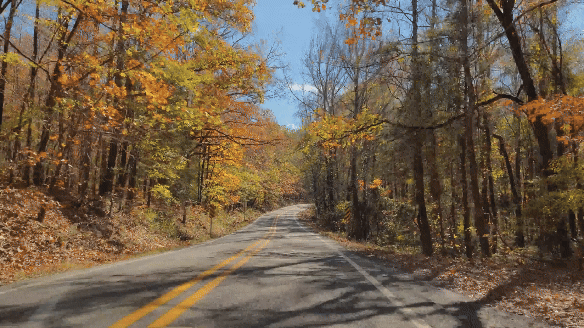 Adobe
Adobe
Winter’s snow and summer’s heat aren’t the only seasonal driving challenges. In fact, fall poses some unique driving safety hazards, whether you’re an adventurer seeking scenic fall leaf colors or merely commuting to work, the season comes with its fair share of unique road hazards that can put cars and people at risk—especially motorcyclists.
Here, we’ll surface some fall driving tips that will help protect you and your car in changing road conditions and the early darkness the changing season provides to drivers.
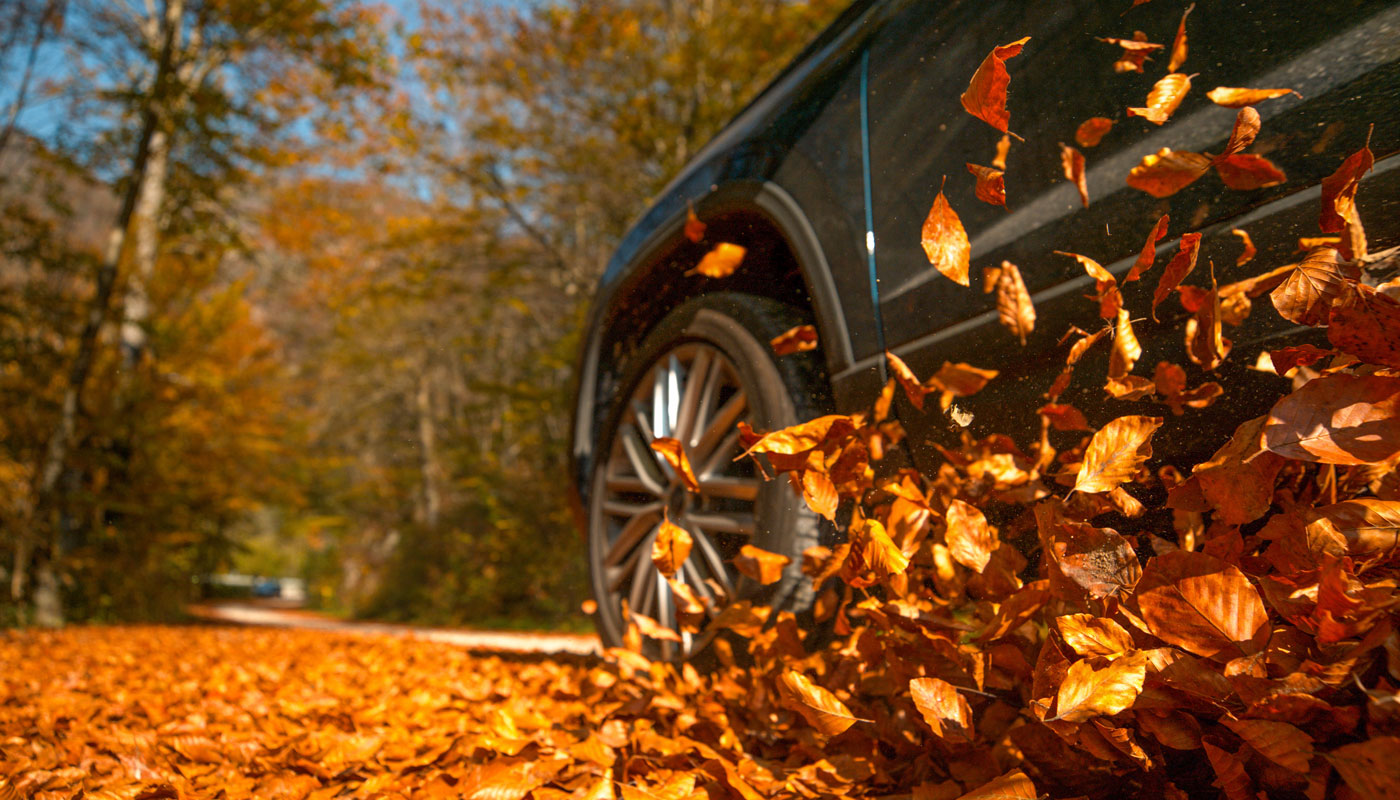 Adobe
Adobe
As leaves begin their journey down, vehicles become a type of middle ground for pileups. Vehicle air vents and windshield wipers are most affected by falling leaves, as they clog ventilation systems and radiators, constrict cabin air filters and cause a streaky mess on glass. But it’s also quite common to see significant damage to a car’s clearcoat from leaf wax, sap, pollen and acid. While it may seem easy to wash leaf residuals away, real damage can be done to your paint’s clearcoat quickly. These types of paint damages can be costly to repair and decrease the overall value of your car.
Always remove leaves from your car by hand or blower, both when you are parked and before you begin to drive. Brooms and brushes are abrasive to paint and can damage delicate mechanical components. Be sure to get under your hood and de-leaf the gully area between your windshield and hood. When wet leaves sit in this area for too long, they can drip moldy, rancid-smelling water into your car that is hard to reverse and can even interfere with electronics. Most importantly, avoid parking under trees when possible.
Wet leaves can be just as slick as ice. Slow down when driving over large patches of leaves and increase your distance from the car ahead of you. Pedestrians and bicyclists can lose traction just as easily as a car in damp fall conditions and may veer from their path, so give them extra room on the road.
If you do skid or hydroplane on wet leaves, don’t panic or slam on your brakes. Instead, steer in the direction you want to go and release the gas pedal. Make sure your tires are inspected and properly inflated at all times, but especially in the fall season. You can use a handheld gauge to check your tire pressure; the correct pressure is posted on the side of your driver’s door or inside your owner’s manual. Stay mindful of tire tread. The National Highway Traffic Safety Administration (NHTSA) states that tires with 2/32 of an inch of tread are unsafe; consider replacing your tires before they reach this level of wear or if you’re planning a high mileage fall road trip, as good tread is what channels water away from your tires.
It’s more difficult to spot potholes, road debris, curbs and traffic markers such as lane lines when leaves begin to litter the roads. Always drive at a safe speed but slow further to avoid hitting camouflaged objects in the fall. Never drive over a large pile of leaves where children and animals might be playing or hiding.
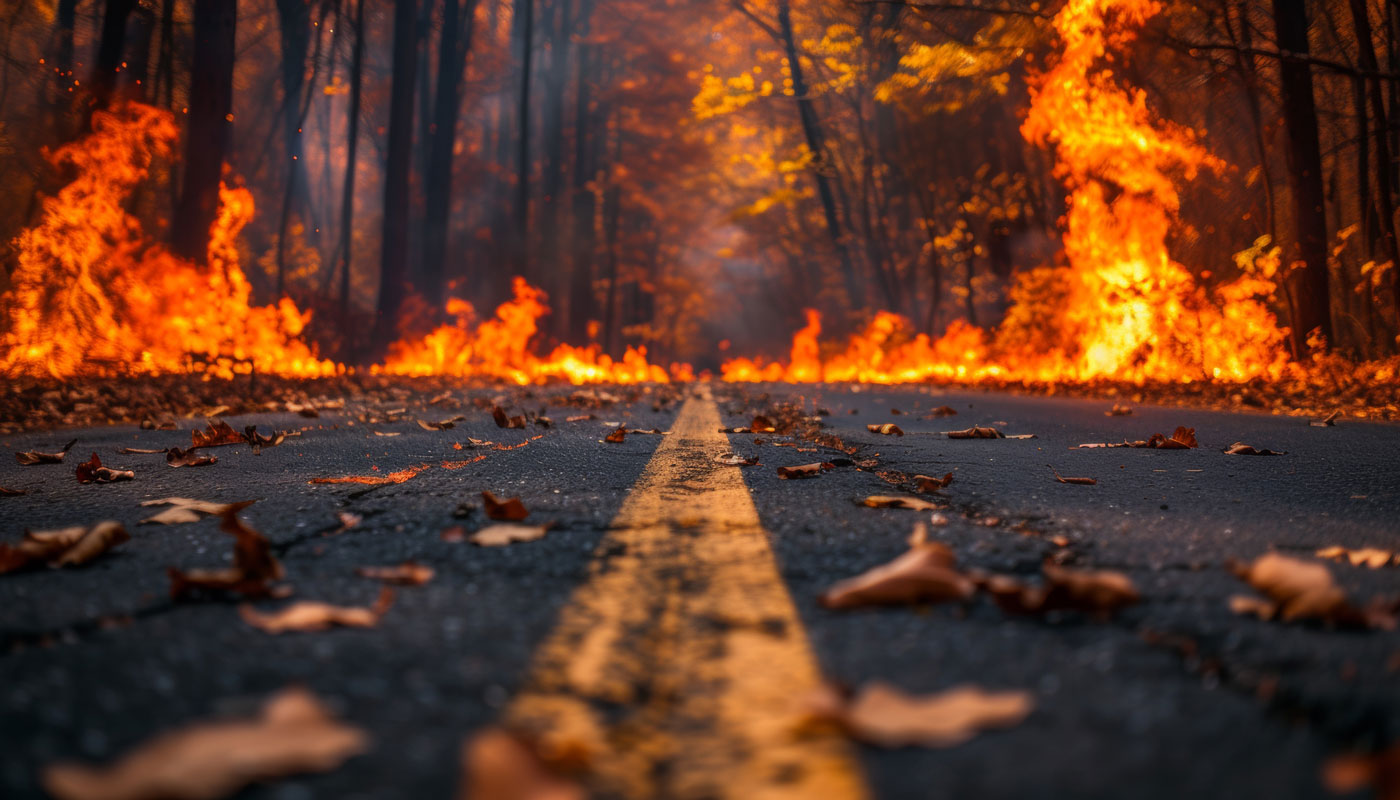 Adobe
Adobe
Wet leaves aren’t the only culprit for danger. Dry leaves can ignite a fire from the heat of your car’s exhaust system or catalytic converter. To avoid this, never park on a pile of leaves and keep leaf debris clear of enclosed or free-standing garages. Even when your car is turned off, its metal components remain exceptionally hot and can start a dry leaf fire quickly.
Daylight saving time ends in fall, so you may find yourself driving in the dark earlier and more often. Maintain a speed that allows you to stop for an obstacle at the far reaches of your headlights. Keep in mind that 50% of traffic deaths occur when the sun is down, and ineffective headlights are often the culprit.
Use your high-beam settings to improve your sight distance by 28%, provided there are no cars in front of you or oncoming traffic, and keep a safe distance from other vehicles around you. Even with the high beams on, headlights may only provide enough light to help you safely stop at speeds of up to 48 mph in real-world conditions.
 Adobe
Adobe
As the air begins to cool and the sun sets earlier, your line of sight and overall visibility on the road may be compromised. When driving in fog, reduce your speed to increase your reaction time. Drive with your low-beam headlights on to more clearly see the roadway, but do not use your hazard lights while driving. Keep sunglasses on hand and use your vehicle’s visors to deflect glare.
If your windshield begins to fog up while you’re driving, turn your car’s defroster on or open your windows slightly; both techniques equalize temperature and humidity to minimize fog. Check your car’s weather stripping (i.e., the rubber seal around your car’s windows and windshield) once per year to ensure that it’s in good condition for leak prevention and keep a clean windshield, inside and out, at all times.
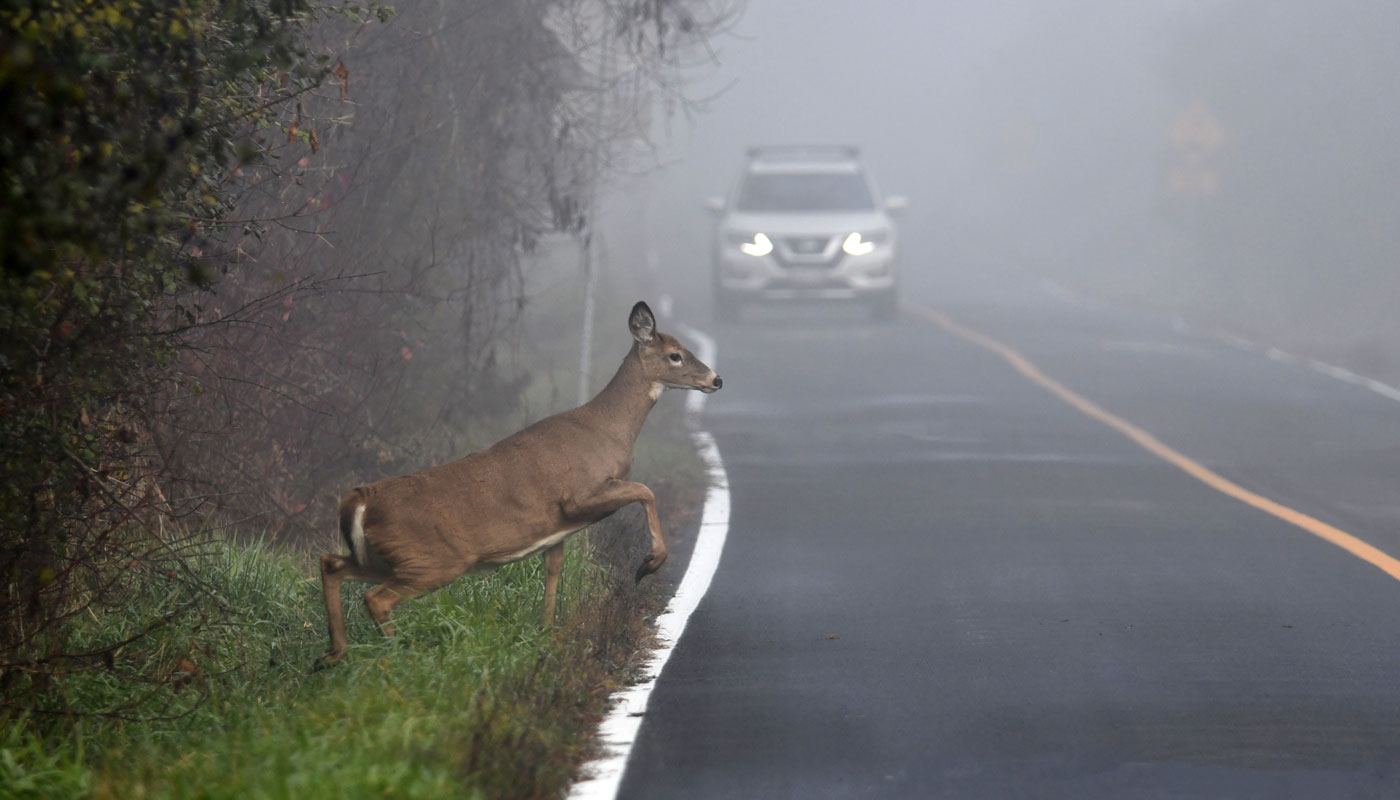 Adobe
Adobe
You’re more likely to cross paths with deer during the fall, especially during sunrise and sunset. In November, insurance claims related to animal strikes are highest with you being 3.5 times more likely to hit a deer than any other month. But deer aren’t the only animals that take to the road in fall. Many smaller animals such as squirrels and chipmunks are also more likely to gather foods near the roads in the fall in preparation for winter.
Keep an eye out for deer-crossing signs that warn of higher deer populations and watch for the yellow glow of eyes on the road ahead of you—a common indicator of deer. If driving in a dim area with no oncoming traffic, use your high beams for greater visibility.
Should you find yourself in a situation where you can’t avoid hitting a deer, don’t swerve—but do brake firmly and stay in your lane. Swerving can confuse animals and force you off the road or into the path of oncoming traffic. Remember, vehicle damage caused by animal strikes is often paid for by your auto insurance if you carry comprehensive coverage. If you carry liability only, you will not likely be covered for animal-related strikes.
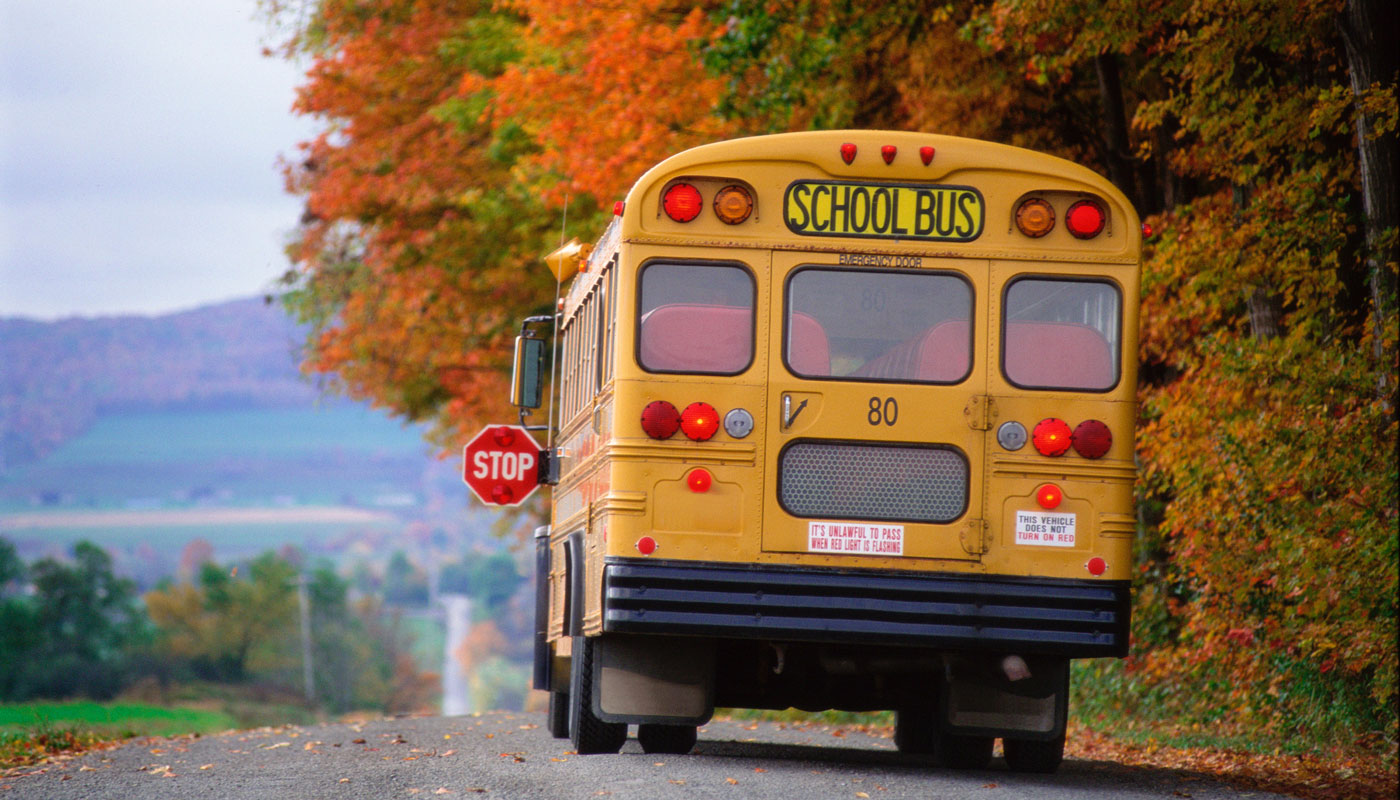 Adobe
Adobe
Fall is synonymous with a return to school and harvesting. This means that both school buses and agricultural equipment make a return to the roads causing heavier traffic, more frequent stops and the need for slower speeds.
Be sure to observe the school bus laws in your state, as violations such as rolling stops or passing a bus while the stop sign is extended, can result in hefty fines and even license suspension. Many local areas have installed safety cameras on school buses to record and ticket motorists that illegally pass the buses while the stop arm is out. (check your area for local laws). Remember the following:
If you commonly drive near school bus stops, beware of blind spots. A bus has several spots around it where students can’t see approaching vehicles, and vice versa. Always reverse carefully, as backup cameras don’t show entire surroundings, and fall is the time of year when children are more frequently on the sidewalks, in driveways and around your vehicle.
Give operators of heavy agricultural equipment ample space on the roads. Harvesting combines, trailers and tractors move at slow speeds, and despite safety reflectors and the legal right to be on the roads, they are often involved in crashes due to the impatience of drivers around them.
If you do come upon slow-moving equipment, remember that they do not travel long distances and will likely be out of your way shortly. Apply the same passing rules you would to ordinary traffic to avoid a head-on collision. Do not cross on a double-yellow line and do not cross on a hill or around a curve. Farm equipment operators are not required to pull over on the side of the road to allow traffic to pass, and they have limited visibility. Give yourself extra time if you’re planning a rural trip or commute in areas known for agricultural harvesting.
With a couple of simple modifications to your driving technique, you can enjoy fall travels or your daily commute comfortably and safely. Almost all changing weather patterns have pros and cons; don’t let a few predictable obstacles stop you from taking in the splendor of the fall season and all its immersive scenery.